Search results for: 'Bronze fibeln'
-
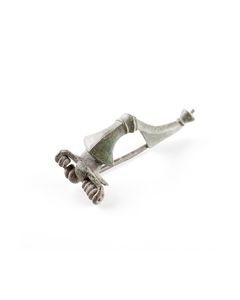 Römische Kräftig Profilierte Fibel
Römische Kräftig Profilierte FibelFibeltyp der späten römischen Kaiserzeit, sogenannte kräftig-profilierte Fibel. 1. bis Mitte 3. Jh. n. Chr., 66mm lang, in museumswürdiger Erhaltung.
Price: on request Roman fibula with beautiful enamel
Roman fibula with beautiful enamelElaborate work dating to the 2nd century AD. The well preserved enamel is a testimony to the colourful world of ancient art.
Price: on request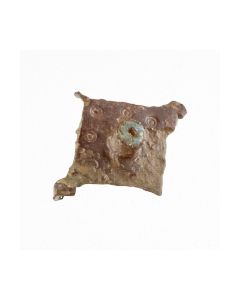 Roman fibula from the Richard Hattatt collection
Roman fibula from the Richard Hattatt collectionLozenge-shaped ancient roman fibula. The piece is published in the standard work "Iron Age and Roman Brooches". Found in Britain.
Price: on request Rare frog fibula
Rare frog fibulaZoomorphic fibula dating to the Roman Principate. Very nice enameled work. Rare variant of this popular fibula type from Roman Gaul.
Price: on request Roman crossbow brooch
Roman crossbow broochWith its silver body and the formerly gold plated bronze knobs the brooch must have been a beautiful sight. Early variant dating to the 3rd century.
Price: on request Gorgeous Roman Imperial fibula
Gorgeous Roman Imperial fibulaThe large bow is dominated by colourful enamel. It is a brooch type that developed during the 1st cent. AD in Central Europe.
Price: on request Provinzialrömische Fibel, Swastika
Provinzialrömische Fibel, SwastikaRömische Fibel aus Bronze, Swastika-Form, mit tierförmigen Enden aus stilisierten Pferdeköpfen. Soldatenfibel des 3. bis 4 Jh. n.Chr., Balkan-Raum.
Price: on request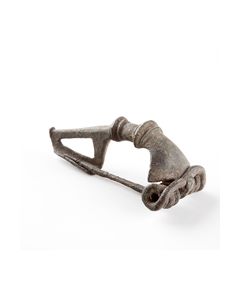 Römische Kräftig Profilierte Fibel
Römische Kräftig Profilierte FibelFibeltyp der frühen römischen Kaiserzeit, sogenannte kräftig-profilierte Fibel. 1. Jh. n. Chr., 58mm lang, in museumswürdiger Erhaltung.
Price: on request Provinzialrömische Fibel, Swastika
Provinzialrömische Fibel, SwastikaRömische Fibel aus Bronze, Swastika-Form, mit tierförmigen Enden aus stilisierten Pferdeköpfen. Soldatenfibel des 3. bis 4 Jh. n.Chr., Balkan-Raum.
Price: on request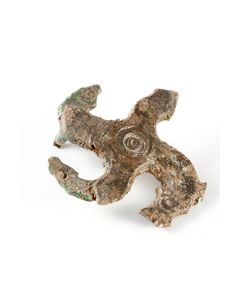 Provinzialrömische Fibel, Swastika
Provinzialrömische Fibel, SwastikaRömische Fibel aus Bronze, Swastika-Form, mit tierförmigen Enden aus stilisierten Pferdeköpfen. Soldatenfibel des 3. bis 4 Jh. n.Chr., Balkan-Raum.
Price: on request Provinzialrömische Fibel, Swastika
Provinzialrömische Fibel, SwastikaRömische Fibel aus Bronze, Swastika-Form, mit tierförmigen Enden aus stilisierten Pferdeköpfen. Soldatenfibel des 3. bis 4 Jh. n.Chr., Balkan-Raum.
Price: on request Roman sandal sole type fibula
Roman sandal sole type fibulaDie Form wird in der Literatur als Schuh- oder Sandalensohle bezeichnet. Der sehr dekorative Fibeltyp war extrem beliebt und im zweiten Jahrhundert weit verbreitet. Er stammt aus den nördlichen römischen Provinzen.
Price: on request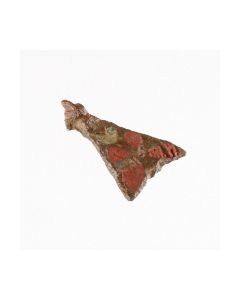 Roman cicada brooch
Roman cicada broochBrooch in the shape of an insect. Popular type in the northern Roman provinces during the 2nd century.
Price: on request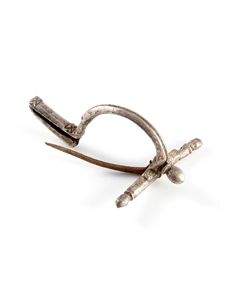 Römische Zwiebelknopf-Fibel aus Silber
Römische Zwiebelknopf-Fibel aus SilberBeliebter Fibeltyp des 3. und 4. Jh. n. Chr. Typischerweise von römischen Männern getragen. Der Träger dieser Fibel aus Silber hatte sicher eine gehobene soziale Stellung.
Price: on request Brooch from Roman Britain
Brooch from Roman BritainA rare mixture of cicada fibula and trumpet fibula, from the 2nd century. Found on the Isle of Wight.
Price: on request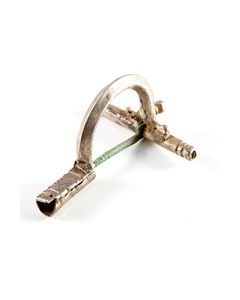 Römische Zwiebelknopf-Fibel aus Silber
Römische Zwiebelknopf-Fibel aus SilberBeliebter Fibeltyp des 3. und 4. Jh. n. Chr. Typischerweise von römischen Männern getragen. Der Träger dieser Fibel aus Silber hatte sicher eine gehobene soziale Stellung.
Price: on request Gallo-Roman animal fibula
Gallo-Roman animal fibulaZoomorphe Fibel mit Wildtier als Motiv. Schmuckstück mit religiöser Symbolik, vergleichbar einem Kreuzanhänger bei heutigen Christen. Gefertigt im 1. bis 3. Jh. n. Chr. in Gallien.
Price: on request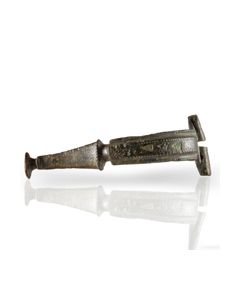 Roman Hod Hill brooch from the Hattatt collection
Roman Hod Hill brooch from the Hattatt collectionNice and rare enameled variant of the Hod Hill type. Found in Norfolk, UK. The piece is published in two books by Richard Hattatt.
Price: on request Disc brooch from Roman Britain
Disc brooch from Roman BritainNicely enameled brooch with a Romano-Celtic sunburst design. From the 2nd century AD. Published in two stardard works on ancient brooches by Richard Hattatt.
Price: on request Enameled disc brooch from Britain
Enameled disc brooch from BritainColourful enameled brooch from the Roman Imperial period. Published in two stardard works on ancient brooches by Richard Hattatt.
Price: on request Brooch from Roman Britain
Brooch from Roman BritainThis rare variant of the T-shaped brooches was found in Lechlade, Gloucestershire. It dates to the 1st or 2nd century AR. From the famous Hattatt collection and published in two standard works for ancient fibulae.
Price: on request Roman brooch of the Hod Hill type
Roman brooch of the Hod Hill typeBeautifully decorated brooch from the first century. A find from the Roman city of Novaesium, today's Neuss in Germany.
Price: on request Dolphin brooch from Roman Britain
Dolphin brooch from Roman BritainThe so-called dolphin brooch is very British. This specimen was probably made by the Celtic Corieltauvi tribe, shortly after the arrival of the Romans in the middle of the 1st century. Published in two works by Richard Hattatt.
Price: on request

